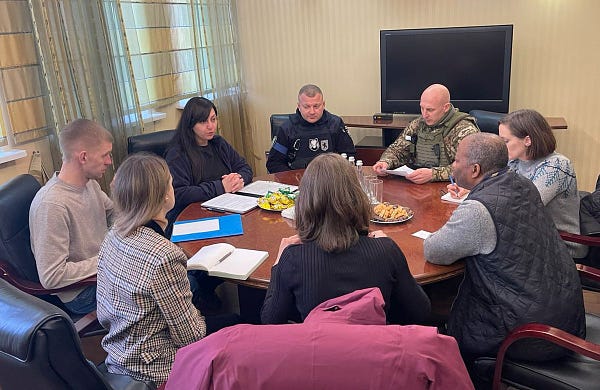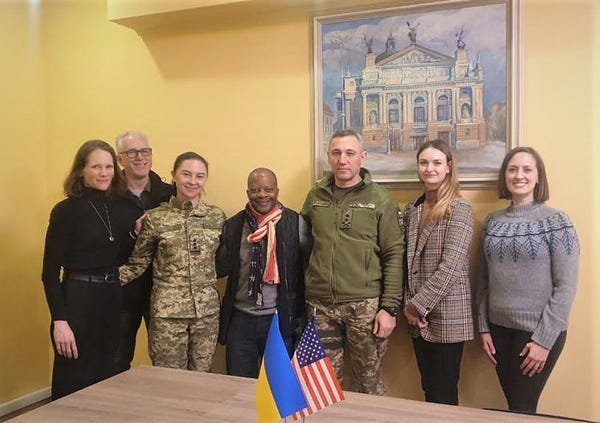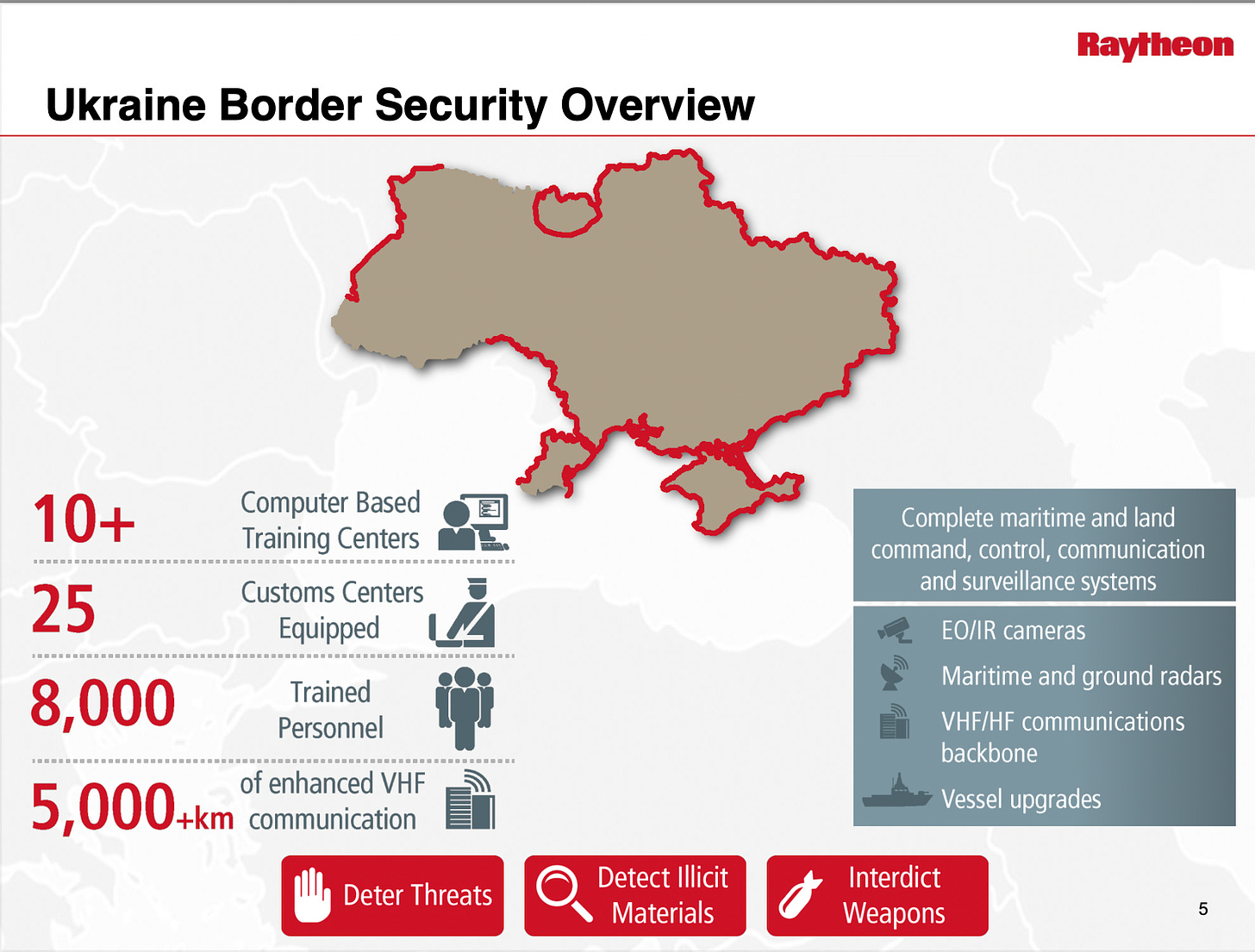
Photograph Source: Sgt. Meleesa E Gutierrez – https://www.dvidshub.net/image/7066953/soldiers-and-airmen-conduct-deployment-activities – Public Domain
On March 26, the U.S. Department of State announced that it would provide Ukraine with $100 million for law enforcement, critical infrastructure, and “essential border security.” Included in this would be personal protection, tactical, and communication equipment; medical supplies; and armored vehicles for the Ukrainian Border Guard Service. On April 5, the director of the State Department’s Bureau for Narcotics and Law Enforcement (INL), Todd Robinson, wrote on Twitter that the INL’s support “for the State Border Guards . . . is unwavering in the face of Russia’s devastating war. I had a chance to personally review equipment & supplies we are providing to support Ukraine’s efforts.”
The INL caught my eye because this was one of the agencies I examined in my book Empire of Borders: The Expansion of the U.S. Border around the World, which traces U.S. border externalization from the Americas and the Caribbean to East Africa, the Philippines, and the Middle East. The armored vehicles caught my eye too, because the INL transferred similar equipment to newly formed border forces in Central America and to fortify Mexico’s border with Guatemala in the 2010s. The INL—an agency whose goal is to counter crime, illicit drugs, and instability abroad “to keep Americans safe”—works in 90 countries across the globe, often orchestrating U.S.-instigated border enforcement in places like Guatemala and Ukraine.
For Washington, the post-9/11 strategy of pushing out the border has become an overlooked yet fundamental part of its enforcement scheme. According to former CBP commissioner Alan Bersin, there has been a “paradigm shift” toward this emphasis on international enforcement. Bersin is the same high-ranking official who in 2012 said, “The Guatemalan border with Chiapas is now our southern border.” While much of the U.S. border externalization does occur in the Western Hemisphere, its scope is far wider. It has followed the spirit of the 9/11 Commission Report, which stated, “The American homeland is the planet.”
In other words, the United States has exported its southwestern border abroad. This happens in many ways. For example, representatives from around the world tour U.S. border enforcement facilities, such as a Turkish delegation that, according to a leaked cable, visited “tactical facilities and expressed an interest in acquiring training materials for physical training (training items such as batons, knives, guns, etc.).” The U.S. also sends CBP agents all over to assess other countries’ borders. As one trainer told me, the agents “travel and see the border operations in various countries and make an assessment of their border security, and make recommendations on what can be done to improve their security.”
The first evidence I came across of U.S. CBP training Ukrainian border forces was in 2005, when it conducted trainings for 24 Ukrainian border guards and customs officials. This was through another Department of State program known as EXBS(Export Control and Related Border Security), whose stated purpose is to prevent the cross-border proliferation of weapons of mass destruction. This training happened while the United States launched Operation “Phantom Linebacker” in Iraq, in which the CBP tactical unit known as BORTAC helped train 15,000 border guards. Fast-forward about a dozen years and John Kelly, the Trump administration’s first DHS secretary, keeps the football metaphor going to explain why the U.S. needs to push out its borders: “Border security cannot be attempted as an endless series of ‘goal line stands’ on the one-foot line at the ports of entry or along the thousands of miles of border between this country and Mexico . . . I believe the defense of our border starts 1,500 miles to the south, with Peru.”
But as we see here, U.S. border exportation goes even farther to places like Kenya, Jordan, and the Philippines, places I visited in researching Empire of Borders. For example, in Jordan and the Philippines I looked at the Department of Defense’s Defense Threat Reduction Agency (DTRA). In both places the Raytheon corporation was contracted to build big surveillance systems along land and maritime borders. Unfortunately, I did not go to Ukraine while researching the book, but now I see I could have. It turns out that Raytheon’s border work with DTRA in Ukraine preceded its activities in Jordan and the Philippines. In a 2016 document titled “Border Security and Critical Infrastructure Protection” (see image below), Raytheon claims that it trained 8,000 personnel in Ukraine and equipped 25 customs centers, while building a border surveillance system that extended 3,730 kilometers along both the Black Sea and parts of the country’s land border. In 2011, Raytheon received $42 million to do this work in Ukraine. In the same document Raytheon boasts of deploying “solutions” in more than 24 countries across the world, covering more than 10,000 kilometers of land and maritime borders, and training more than 9,000 members of “security forces” in “surveillance system operations, maintenance and border security operations.”
In this sense, the war rhetoric used to justify increased border funding ends up fortifying a violent global border apparatus of surveillance systems, detention camps, and razor wire walls. The U.S. money and assistance simply supplement the significant funding that Ukraine has received from the European Union and NATO for border enforcement and detention. One such place was a detention center known as the Zhuravychi Migrant Accommodation Centre, which was converted from army barracks in 2007 with EU funding, according to reporting by Katy Fallon for Al Jazeera. Fallon reported on April 4 that when the sirens sounded warning of a Russian attack, or even as blasts from artillery fire were within earshot, prison guards ran for safety down the street, but there was no air raid shelter for the detainees who were from Sudan, Pakistan, and Bangladesh, among other places, many whom were arrested and incarcerated months before the Russian invasion. Since Russia began its bombing assault more than a month ago, more than 4 million people have fled the country.
As researcher Petra Molnar of the Refugee Law Lab (and contributor to The Border Chronicle) told me, “It is clear that there is a two-tier system in place for people who are fleeing Ukraine, meaning people who are easily identifiable as Ukrainian and those of racialized backgrounds or the Roma community.” Molnar has been on the ground at the Hungary, Slovakia, and Poland borders with Ukraine in the last month.
As Molnar points out, this sort of discriminatory treatment at the border is not new. Human Rights Watch reported in 2010, Ukrainian border guards caught and mistreated many of the 161 refugees interviewed by the human rights organization. According to HRW, many described being hit or kicked, and eight people (from Iraq, Afghanistan, Somalia, and Palestine) said interrogations included electroshock torture.
And regionally, there were the late-2021 incidents in which Polish border guards forced people back into Belarus (both countries border Ukraine), whose border patrol also stopped them. People ended up staying in a limbo zone between the two countries, facing hardship and deadly cold for weeks, another example of the violence inherent to the global border system and the people it targets. Polish border forces have also received trained by the United States, including from ICE’s all-indigenous tactical enforcement group known as the Shadow Wolves, which patrols only the Tohono O’odham Nation in southern Arizona. In 2014 Shadow Wolves trained 12 Polish border guards in tracking techniques to be used on the country’s eastern border with Belarus and Ukraine. While Polish forces receive training and resources mainly from the EU, this is still one way that enforcement done in the Arizona borderlands is exported abroad.
As Nathan Akehurst a writer and campaigner for Global Strategic Communications Council points out there are three things people concerned about migrant rights might focus on, that the continued humanitarian response to mass Ukrainian displacement remain satisfactory (Ukrainian refugees have been mostly embraced by the EU and across the world), that this generally positive response be used as a model for treatment of refugees in future (or current other) displacements (regardless of country of origin or skin complexion), and that militarization on all sides and its links to border violence be underscored. In this sense, even as bombs continue to strike, it is important to examine these U.S. projects—projects justifying armored, weaponized vehicles in places from Ukraine to Guatemala as one example—propelled amid the fog of war.
This first appeared on The Border Chronicle.





